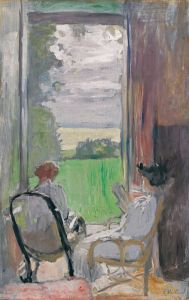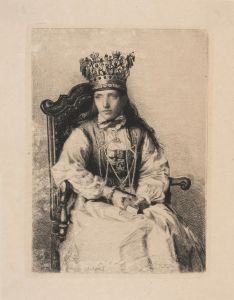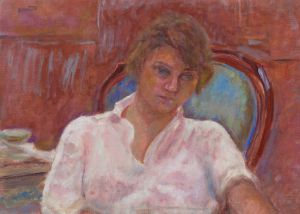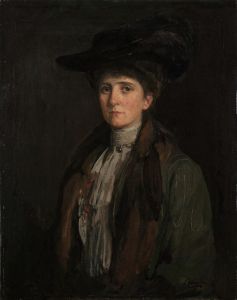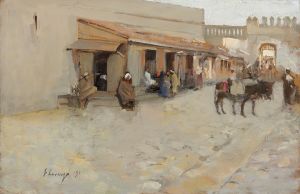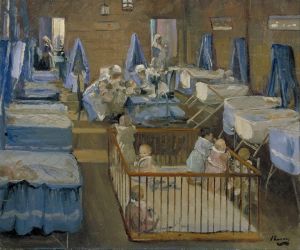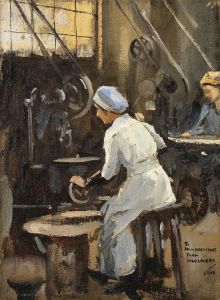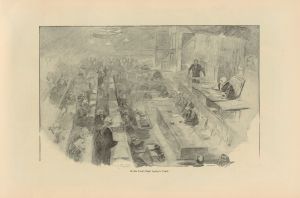
The Garlanded Girl 1896
A hand-painted replica of Sir John Lavery’s masterpiece The Garlanded Girl 1896, meticulously crafted by professional artists to capture the true essence of the original. Each piece is created with museum-quality canvas and rare mineral pigments, carefully painted by experienced artists with delicate brushstrokes and rich, layered colors to perfectly recreate the texture of the original artwork. Unlike machine-printed reproductions, this hand-painted version brings the painting to life, infused with the artist’s emotions and skill in every stroke. Whether for personal collection or home decoration, it instantly elevates the artistic atmosphere of any space.
"The Garlanded Girl" is a painting created in 1896 by the renowned Irish artist Sir John Lavery. Lavery, born in Belfast in 1856, was a prominent figure in the British art scene and is best known for his portraiture and genre scenes. He was a key member of the Glasgow Boys, a group of artists who were instrumental in introducing Impressionism to Scotland.
The painting "The Garlanded Girl" exemplifies Lavery's adept skill in capturing the subtleties of light and texture, hallmarks of his broader body of work. It features a young woman adorned with a garland, a motif that suggests themes of beauty, youth, and perhaps celebration or festivity. The use of a garland in art often symbolizes victory or honor, though in this context, it may simply serve to enhance the aesthetic appeal of the composition.
Lavery's technique in this painting reflects his training and influences. He studied at the Haldane Academy in Glasgow and later at the Académie Julian in Paris, where he was exposed to the works of the French Impressionists. This influence is evident in his loose brushwork and the emphasis on capturing the effects of light, which are characteristic of Impressionism. However, Lavery's style also retains a certain realism and attention to detail, particularly in his depiction of the human form.
During the late 19th century, Lavery gained considerable acclaim for his portraits and was sought after by many prominent figures of his time. His ability to convey the personality and status of his subjects made him a favorite among the elite. "The Garlanded Girl," while not a commissioned portrait, still showcases Lavery's talent in rendering the delicate features and expressions of his subjects.
Lavery's contribution to art extended beyond his paintings. He was knighted in 1918 for his services to art and played a significant role in the cultural exchanges between Ireland and Britain. His works are celebrated for their elegance and technical proficiency, and they continue to be exhibited in major galleries and collections worldwide.
"The Garlanded Girl" is part of Lavery's broader oeuvre that captures the social and cultural milieu of his time. While specific details about the model or the exact inspiration for this particular painting may not be well-documented, the work remains an important piece within Lavery's artistic legacy. It reflects the artist's mastery of portraiture and his ability to infuse his subjects with a sense of grace and vitality.
Today, Sir John Lavery's paintings, including "The Garlanded Girl," are appreciated for their historical significance and artistic merit. They offer a glimpse into the stylistic transitions of the late 19th and early 20th centuries and continue to be studied and admired by art historians and enthusiasts alike.







